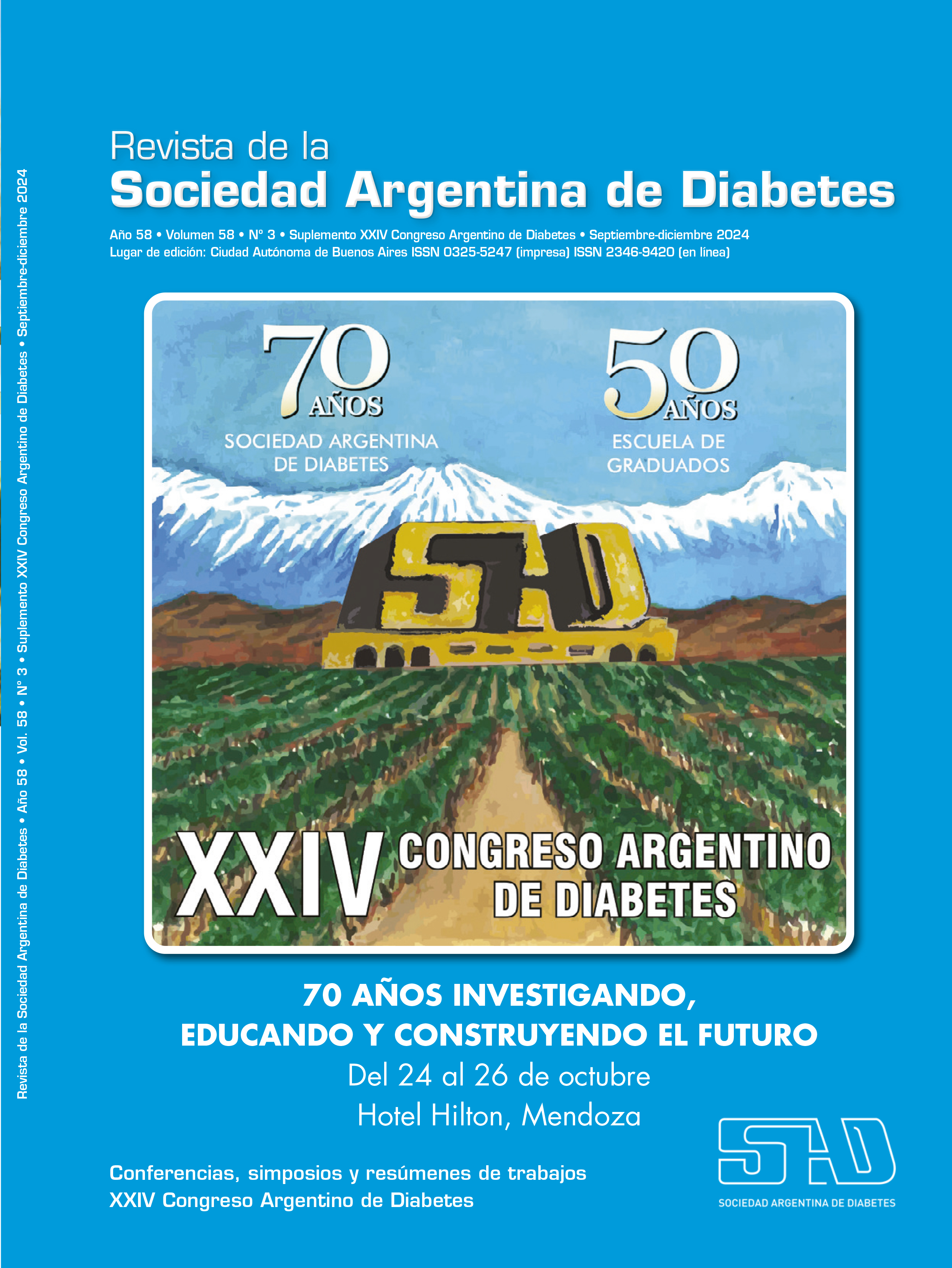CONFERENCE HOUSSAY: Immunity and diabetes issues reviewed in light of basic science and current technologies
Keywords:
immunity, diabetesAbstract
Conventional methods for measuring autoantibodies, called markers, in diabetes mellitus (DM) with an autoimmune component (DM1 and LADA), have been radiometric or enzymatic (ELISA).
Anti-insulin autoantibodies (IAA) were among the first to be studied.
Antibodies with the same specificity have also been detected in diabetic patients treated with insulin (AI) and in other rare diseases. In all these cases, the aforementioned tests were shown to be very sensitive, but they had the limitation of expressing relative results because they could not distinguish the two constitutive parameters of the analytical signals, such as affinities and concentrations.
The so-called absolute methods can discriminate these parameters and are appropriate to study in depth the cases in which very high levels appear high IAA or IA by conventional preliminary analyses.
References
I. Trabucchi A, Iacono RF, Guerra LL, Faccinetti NI, Krochik AG, Arriazu MC, Poskus E, Valdez SN. Characterization of insulin antibodies by surface plasmon resonance in two clinical cases: brittle diabetes and insulin autoimmune syndrome. Plos One 2013;8:1-7. Doi: 10.1371/journal.pone.0084099.
II. Cardoso LA, Pomares M, Avalos A, Lapertosa S, Frechtel G, Poskus E. Use of cross-reactivity immunoassay to orient insulin replacement in diabetic patients with
high levels of insulin antibodies. MethodsX 2016;502-7. doi: org/10.1016/j.mex.2016.08.003.
Downloads
Published
Issue
Section
License
Copyright (c) 2024 on behalf of the authors. Reproduction rights: Argentine Diabetes Society

This work is licensed under a Creative Commons Attribution-NonCommercial-NoDerivatives 4.0 International License.
Dirección Nacional de Derecho de Autor, Exp. N° 5.333.129. Instituto Nacional de la Propiedad Industrial, Marca «Revista de la Sociedad Argentina de Diabetes - Asociación Civil» N° de concesión 2.605.405 y N° de disposición 1.404/13.
La Revista de la SAD está licenciada bajo Licencia Creative Commons Atribución – No Comercial – Sin Obra Derivada 4.0 Internacional.
Por otra parte, la Revista SAD permite que los autores mantengan los derechos de autor sin restricciones.




























